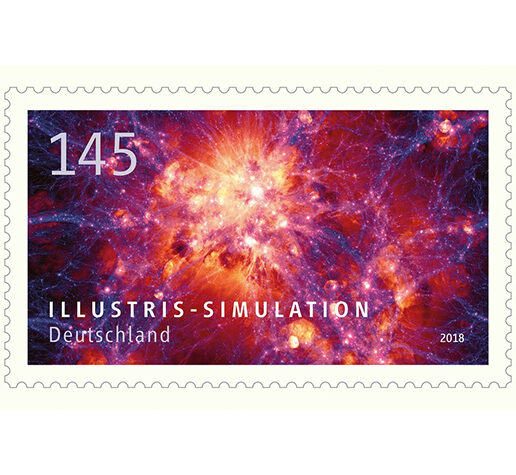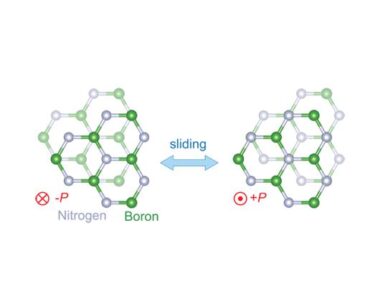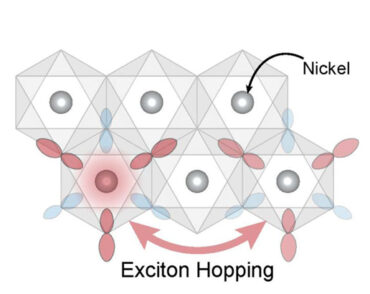
Stamp of approval
MIT’s Mark Vogelsberger and the Illustris project are honored by Germany’s postal service with an official stamp.
The German postal service has issued a stamp to honor the Illlustris simulation project, a supercomputer simulation of the universe that has provided astrophysicists with new insights into the formation and evolution of galaxies.
The Illustris project is headed by an international collaboration of astrophysicists from MIT, Harvard University, the Heidelberg Institute for Theoretical Studies, the Max-Planck Institutes for Astrophysics and for Astronomy, and the Center for Computational Astrophysics.
Mark Vogelsberger, an associate professor of physics at MIT and the MIT Kavli Institute for Astrophysics and Space Research, leads MIT’s involvement in the Illustris project. The MIT team has been heavily involved in the development of the simulation, its execution, and the analysis of the resulting simulation data.
Since its publication in 2014, the simulation data has been studied by more than 2,000 researchers resulting in nearly 200 papers. This year, the team published first results of simulations from what they call “Illustris — The Next Generation” or IllustrisTNG, which provides an even more accurate picture of the universe.
“The German government was looking for astrophysical research that had a major impact on science in recent years,” Vogelsberger says.
Olaf Scholz, Germany’s Federal Ministry of Finance, contacted the Illustris collaboration team for permission to use the visual data from simulations for a postage stamp, Vogelsberger says. Almost a year after the initial inquiry, the Illustris collaboration was notified that a German stamp would be issued to honor their work.
The stamp was officially unveiled by Deutsche Post on Dec. 18.
“As far as I know, this is the first astrophysical simulation to ever get its own stamp, and maybe even the first stamp to honor general simulation work,” Vogelsberger says.


